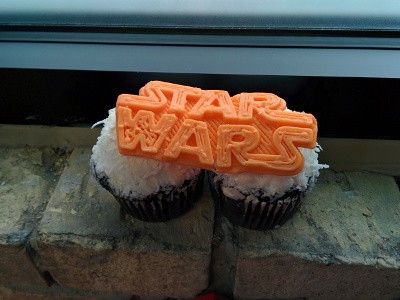
 Waterloo-based 3D printing start-up Structur3d has been pushing the boundaries of what is likely to become a major market in the future of printable goods: food.
Waterloo-based 3D printing start-up Structur3d has been pushing the boundaries of what is likely to become a major market in the future of printable goods: food.
Using its Discov3ry 3D paste extruder to expand the capabilities of a regular 3D printer beyond just using molten plastic, Structur3d has been working out the kinks involved in modeling any paste-like soft food, including chocolate spreads, icing sugar, honey, syrup, pectin, and cream cheese, into edible shapes.
Priced at $399 U.S., the Discov3ry represents a relatively inexpensive way of using a regular fused deposition modeling (FDM) printer to model a wide variety of paste-based substances.
Due to the low viscosity of materials used, other than the cream cheese, Structur3d Research and Development specialist Johannes Schumacher found that the liquid substances were subject to what he described as a “lotus-like effect”.
“The leaves of the lotus flower repel water so strongly that droplets cannot wet the surface and just roll along the surface, taking all dirt with them,” writes Schumacher. “We saw a similar effect to this when printing honey onto wax paper. After a line of honey was deposited, it transformed into individual droplets. These droplets grew bigger and attracted adjacent honey. In the end, no visible trace of honey was left in between the drops, as long as the nozzle was not depositing new honey.”
While messing around in the lab with honey and cream cheese may not seem like rocket science, figuring out how to 3D print food is going to be an important nut to crack for conquering future markets like soft food for seniors as well as for space travel.
One of the stumbling blocks posed by a trip to Mars, or establishing a Moon settlement, is food. If we can figure out how to 3D print food, that would represent a major logistics challenge overcome, given that we’d otherwise have to haul years worth of food and water along with us on board a ship.
In October, a group of European experts presented the results of three years of study related to their PERFORMANCE (Personalized Food for the Nutrition of Elderly Consumers) project in Brussels.
Their 3D printing challenge lies in the fact that 60% of seniors living in care facilities suffer from dysphagia, or difficulty chewing and swallowing generally caused by a stroke or dementia.
Whereas most dysphagia food is now either puréed or mashed, the PERFORMANCE food promises to be geared towards each patient’s particular case, selecting the best dose of nutrients based on their gender, weight and medical condition to produce soft ready-to-eat meals for people who have difficulty chewing.
It’s set to be a big market, given that this past July Canada passed the point at which people over 65 outnumber people under 15 for the first time in history, putting us in the aging company of Denmark, Germany and Japan, where adult diapers now outsell children’s diapers.
Dutch researchers working out of Maastricht University are confident that they will have a commercially viable lab-grown meat product ready for store shelves in the next five years.
While Structur3d has had success adapting other materials to 3D printing, such as silicone, icing sugar, wood filler and urethane, their future success for the burgeoning food market depends on their ability to figure out how to print an ever-expanding range of foodstuffs.
Not only may it come in handy printing food for exotic applications like space exploration, but it stands to participate in the huge future problem of feeding an aging population.
Leave a Reply
You must be logged in to post a comment.




 Share
Share Tweet
Tweet Share
Share




Comment